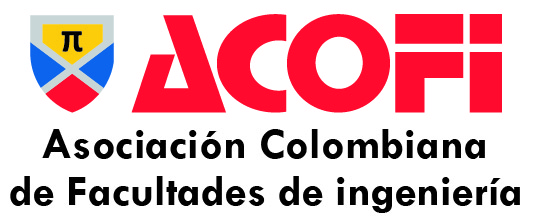USE OF ADVANCED SIMULATION SOFTWARE ASPEN PLUS AS TEACHING TOOL IN CHEMICAL REACTION ENGINEERING
DOI:
https://doi.org/10.26507/rei.v10n19.508Palabras clave:
Reactor modeling, Chemical Reaction Engineering, Aspen Plus simulationResumen
A comprehensive step-by-step Aspen Plus simulation for limonene epoxidation in a batch reactor using a Langmuir – Hinshelwood – Hougen – Watson (LHHW) kinetic expression is detailed described. Model validation is presented by comparison of the Aspen Plus simulated data and laboratory-scale experimental data. The RMSD between experimental and simulated data lies around 4x10-4. Thus the presented model is a valid tool for studying and analyzing the conceptual design and scale-up for the reaction system. This work is currently used in normal sessions of a Chemical Reaction Engineering course and can be used as pedagogic tool for improving inductive as well as deductive mental processes in the Chemical Reaction Engineering studentsDescargas
Referencias bibliográficas
Aspen Plus TM. (2014). Aspen Engineering Suite, Cambridge MA, USA. Aspen Technology Inc. Recuperado el 04 de febrero de 2014 de http://www.aspentech.com.
Barrera, R., Villa, A.L., Montes, C. (2006). Limonene Epoxidation: Diffusion and Reaction over PW-Amberlite in a Triphasic System. Industrial & Engineering Chemistry Research, Vol. 45(13) p. 4589 – 4596.
Barrera, R., Villa, A.L., Montes C. (2009). Measurement of Activity Coefficients at Infinite Dilution for Acetonitrile, Water, Limonene, Limonene Epoxide and their Binary Pairs. Fluid Phase Equilibria. (275), 46 – 51.
Barrera, R. (2010). Modelado, simulación y diseño del reactor y el proceso de separación para la producción de epóxido de limoneno. Tesis Doctoral, Departamento de ingeniería química, Universidad de Antioquía, Medellín, Colombia.
Barrera, R., Villa, A.L., Montes, C., Ricardez-Sandoval, L., Elkamel, A. (2010). Dynamic Modeling and Optimization of a Batch Reactor for Limonene Epoxidation. Industrial & Engineering Chemistry Research, 49(18), 8369 – 8378.
Barrera, R., Villa, A.L., Montes, C. (2012). Modeling and simulation of a batch distillation column for recovering limonene epoxide. Revista EIA. Escuela de Ingeniería de Antioquía, 18, 131–141.
Barrera, R., Salazar, C., Pérez, J. (2014). Thermochemical Equilibrium Model of Synthetic Natural Gas Production from Coal Gasification Using Aspen Plus, International Journal of Chemical Engineering, 2014, (Electronic publication, Article 192057, DOI: http://dx.doi.org/10.1155/2014/192057.
Cameron I., Lewin, D. (2009). Curricular and pedagogical challenges for enhanced graduate attributes in CAPE. Computers & Chemical Engineering, 33(10), 1781–1792.
Farrell S., Hesketh, R.P., Savelski, M.J., Slater, C.S. (2004). Process simulators in the ChE Curriculum, Proceedings of the 2004 Western Simulation Conference, paper I051, San Diego, CA.
Fogler, H.S. (2008). Elementos de ingeniería de las reacciones químicas, (4ta Ed.), México: Prentice Hall.
Mahecha-Botero, A., Grace, J.R., Elnashaie, S.S., Lim, C.J. (2007). A Comprehensive Approach to Reaction Engineering. International Journal of Chemical Reactor Engineering, 5, (Electronic publication, Article 17, DOI: 10.2202/1542-6580.1399).
Naveed, R., Asma, A., Shahid, N., Abdullah, M. (2011). Simulation of hybrid biomas gasification using Aspen plus: A comparative performance analysis for food, municipal solid and poultry waste. Biomass an Bioenergy, 35, 3962 – 3969.
Qun Yi, Q., Feng, J., Ying, L. (2012). Optimization and Efficiency Analysis of Polygeneration System with Coke-Oven gas and Coal Gasified gas by Aspen Plus. Fuel, 96, 131–140.
Scenna, N.J., Aguirre, P.A., Benz, S.J., Chiotti, O.J., Espinosa, H.J., Ferrero, M.B., Montagna, J.M., Mussat, M.C., Pérez, G.A., Rodríguez, J., Salomone, H.E., Santa Cruz, A.S.M., Tarifa, E.E., Vega, J., (1999). Modelado, Simulación y Optimización de Procesos Químicos. Universidad Tecnológica Nacional, Argentina. Recuperado el 13 de agoto de 2014 de http://www.modeladoeningenieria.edu.ar.
Seider, W., Seader, J.D., Lewin, D., (2003). Product and Process Design Principles. Synthesis, Analysis, and Evaluation. (2nd Ed.). New York, NY: John Wiley and Sons.
Tarifa, E. (1998). Simulación de Sistemas Químicos. Universidad Tecnológica Nacional, Argentina. Recuperado el 09 de julio de 2014 de http://www.modeladoeningenieria.edu.ar.
Umich (2014). Introduction to Aspen Plus™ 2006.5, University of Michigan. Recuperado el 16 de septiembre de 2014 de http://www.umich.edu/~essen/html/help/software/html/aspen/intro.htm.
Descargas
Archivos adicionales
Publicado
Cómo citar
Número
Sección
Licencia
Se autoriza la reproducción total o parcial de los documentos publicados en la Revista siempre y cuando se cite la fuente y el autor.
| Estadísticas de artículo | |
|---|---|
| Vistas de resúmenes | |
| Vistas de PDF | |
| Descargas de PDF | |
| Vistas de HTML | |
| Otras vistas | |









